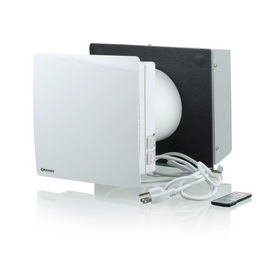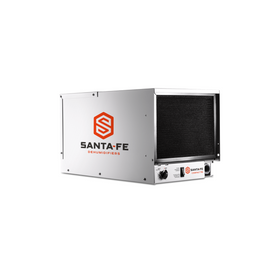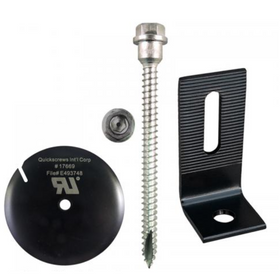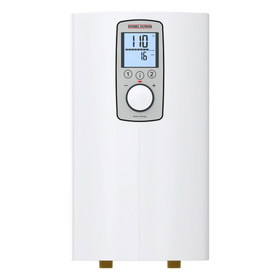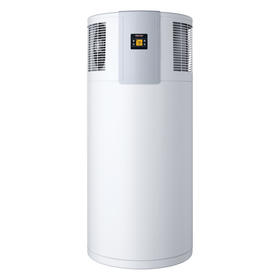
Household Hydropower: An Underutilized Source of Renewable Energy
Last Updated: Feb 9, 2025Hydroelectric power is one of the oldest types of renewable energy. While solar panels have seen tremendous growth in recent years, hydroelectric energy has been produced since the 1880s. The Vulcan Street Plant in Appleton, WI, was the first renewable energy plant. It was sized at a not-so-impressive 12.5 kilowatts in 1882, equivalent to about 30-45 solar panels, depending on the panel's wattage rating. However, as technology has improved, global hydropower output has grown to around 16 percent of total global electricity generation. An estimated 45,000 mega-dams produce clean energy around the world.
While countries such as Costa Rica produce more than about 75 percent of their energy from hydropower, today, there is widespread opposition to many mega-dam projects that are in the works. The Belo Monte Dam in the Brazilian Amazon, to name just one example, was built, despite much ecological concern and impacts to local indigenous people. Mega-dams can cause many environmental problems, including flooding wetlands and farmland, displacing local populations, reducing biodiversity, and even causing greenhouse gas emissions through rotting vegetation within the reservoirs.
Today, however, the potential for small-scale hydroelectric generation on a household and community basis allows renewable hydroelectric energy generation to become a reality without the environmental and social problems.
Table of Contents
- What is Micro Hydropower?
- How Does A Household Hydropower System Work?
- What Companies Offer Micro Hydropower Systems?

What is Micro Hydropower?
According to the US Department of Energy, "micro hydropower can be one of the most simple and consistent forms of renewable energy on your property." They go on to say that "A micro-hydropower system needs a turbine, pump, or waterwheel to transform the energy of flowing water into rotational energy, which is converted into electricity."
Because rivers and creeks flow around the clock, micro-hydro power can supply energy twenty-four hours a day. On the other hand, solar and wind energy can only produce electricity when the sun and wind are present. Thus, they require either connection to the grid or a battery system to store the power they generate.
There are over 3.5 million miles of rivers, creeks, and streams in the United States alone. Of course, inner-city inhabitants probably don't have access to a flowing body of water. Luckily, thousands of homeowners in rural and suburban areas have properties with flowing water with hydroelectric electricity generation potential. In areas where larger rivers or creeks with year-round water flow, neighborhoods could come together to finance slightly larger micro-hydro projects for community-owned electricity generation.

How Does A Household Hydropower System Work?
When looking at a vast mega-dam, a suburban or rural homeowner with a small river or creek flowing through their backyard might think: "How am I supposed to reproduce this on my property to produce clean and renewable energy for my home?"
Even if you are not an engineer, the science behind hydroelectricity is relatively easy to understand. The combination of water flow and vertical drop (also called "head") creates a constant pressurized liquid energy source. Micro-hydro systems capture this dense form of energy in a pipe or chute and direct it towards a turbine. The directed pressure of the water moves the turbine to produce clean and renewable energy. The larger the volume of flowing water and the larger the vertical drop, the more energy can be produced.
Consider the following equation. It can be used to get a general idea of how much electricity you might be able to generate with the stream or river running through your property.

This equation will allow you to calculate the estimated wattage of a small micro-hydro system that you could set up on your land. For example, let's say that you have a stream that averages 20 gallons of flow per minute and have 35 feet of vertical drop from where the stream enters your land to where it leaves it. You could build a mini-reservoir to capture the water, install a pipe to move the water from the high point to the low end of your property (to create head), and theoretically produce 70 watts of electricity (20*35/10).
How many kilowatt-hours (kWh) would a system that size produce? Since rivers flow continuously, you would multiply that number by 24, meaning that you could produce almost 1,700-watt-hours, or 1.7 kilowatt-hours every day. (For reference, one 100-watt light bulb turned on for 10 hours uses 1.0 kWh.) Larger rivers with a more vertical drop and larger flow rates can produce much larger amounts of electricity. However, these figures show that even a small waterway can produce a decent amount of electricity. Consider this when combined with solar panels. A mini-hydro system could charge a battery pack throughout the day when the sun is shining, and the solar panels deliver electricity to the home. That saved power can then be put to use during peak energy usage at night. In this way, it might even be feasible to go completely off-grid.
What Companies Offer Micro Hydropower Systems?
The most significant limitation to micro hydropower is that you need to have a body of flowing water on or near your property. On the plus side, the United States and Canada have been producing hydroelectric power for over a century. So, there is an abundance of companies producing mini hydroelectric generators and turbines that can easily be adapted for household hydroelectric generation. Below, we look at three of the leading companies offering products for mini-hydro generation.

Canyon Hydro
Canyon Hydro concentrates on mini hydro systems that are under 100 kW. This company provides all of the necessary parts for complete system installation, including the water turbine and housing, the drive system, the generator, the electric governor, and the assembly frame. Since 100 kW is usually more than what one household typically consumes, this is a perfect option for small, community-run renewable energy systems.
Tobias Roberts
Tobias runs an agroecology farm and a natural building collective in the mountains of El Salvador. He specializes in earthen construction methods and uses permaculture design methods to integrate structures into the sustainability of the landscape.



